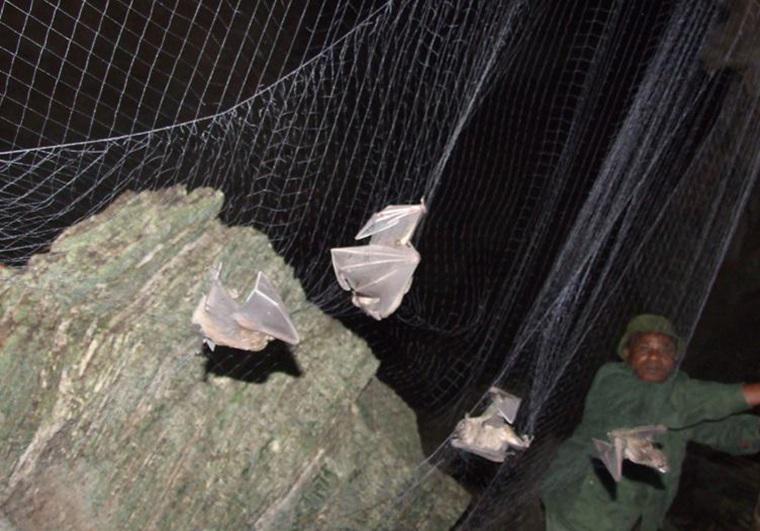Prince Kaleme
Other projects
14 Aug 2002
Habitat Preference and Distribution of Small Mammals in and Around Kahuzi Biega National Park (KBNP), Eastern DRC
19 Mar 2015
Bat Conservation in the Mount Hoyo Forest Reserve, Eastern Democratic Republic of Congo
4 Nov 2016
Using Bats for the Conservation of Mount Hoyo Forest Reserve, Eastern Democratic Republic of Congo
27 Jun 2019
Protection of Caves, Forests and Roost Sites of Bat in the North Eastern Democratic Republic of Congo
The aim of the project is to census bats on Mount Hoyo in order to provide to the foundation and conservation organisations with the bat checklist of Mt Hoyo, conduct a monitoring of bats in roosts to inform if the populations are increasing or decreasing and sensitise local populations on the importance of bats for their economy such as pollination of plants and tourism.

Bats in mist nets. The chief warden holding the MN to help remove bats.
Mount Hoyo is home to many bat roosts and a place where migratory species range for some parts of the year. Local people have reported that bats are hunted as food. No assessment of biodiversity in the area has occurred. That is why we intend to build a database of the existing information and also conduct an inventory of bats in the site. We will also record all the other species that can be reported in the site as well as monitor them in collaboration with the Institut Congolais pour la Conservation de la Nature (ICCN – the Congolese Institute for Nature Conservancy). We intend also to raise awareness to among local people about the importance of bats in ecosystem services. The fact that the diversity of bats is not known and they are among the most hunted vertebrates has motivated us to rectify this situation and if possible, to have it recognized as an important bat area.
In assessing the bat diversity and raising awareness to local populations, the bat roosts in the reserve will be surveyed and monitored by rangers and some of the threats will be minimized. Thus, bat species diversity will be assessed. Thus, bats could live in peace with humans. The information collected could be used as baseline data for this area since it was gazetted in late 1947. Community awareness and sensitization will be carried out where teams will discuss with local communities and local chiefs (main stakeholders) to agree on possible co-management schemes that could benefit both wildlife managers and communities.